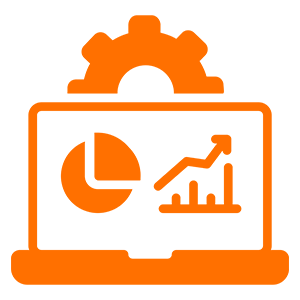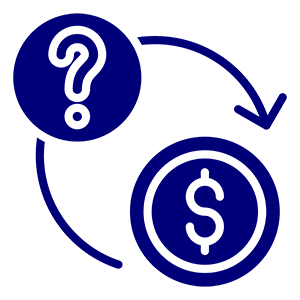BLOG
When Seeing Isn’t Enough: Why Insights Need Automation
Most organisations don’t have a data problem.
They have an action problem.
Dashboards are everywhere — wallboards in the contact centre, executive scorecards, operational reports in every business unit. Yet despite all these visualisations, decisions are still made too slowly, too inconsistently, or too late to matter.
The reason is simple: visualisation is only half the story.
The real value shows up when insights trigger automated action — routing tasks, sending alerts, orchestrating workflows, and optimising resources in real time.
That’s the shift from looking at data to letting data run the playbook. And it’s exactly where emite is designed to help.
The Limitations of “Look-Only” Dashboards
Traditional dashboards were built for a world where:
- Data updated overnight.
- Decisions were made in weekly meetings.
- Action was manual and slow.
Today, that model breaks down. Static dashboards create passive analytics cultures:
- Teams “check the numbers” but still rely on gut feel.
- Insights are spotted, but follow-up is inconsistent or delayed.
- The same issues surface week after week because nothing in the system actually changes.
In other words, dashboards answer “what happened?”
But they don’t reliably drive “what should happen next?”
To bridge that gap, insights need to move from the screen into your operational workflows.
When Insights Become Triggers
An automation-ready analytics ecosystem treats every insight as a potential trigger.
Instead of hoping someone notices a red number on a dashboard, you define what should happen when certain conditions are met — and let the platform execute.
For example:
- If queue time exceeds 10 minutes for a high-value customer segment,
→ automatically prioritise their interactions and notify a supervisor. - If payment failure rates spike for a specific product or region,
→ create an incident, notify finance and product teams, and surface a pre-built root cause analysis view. - If critical infrastructure metrics drift out of tolerance,
→ log an event, open a maintenance ticket, and alert on-call engineering.
This is where analytics meets automation — and where emite’s architecture is purpose-built to help you move faster.
How emite Turns Insight into Action
emite connects the full chain: data integration → advanced analytics → visualisation → automation.
-
Event-driven architecture
emite is built around an event-driven design, where important changes in your data don’t just update a chart — they generate events that can be used as triggers.
- Define thresholds, patterns, or anomalies that matter to your business.
- Turn those into events that emite can publish into your broader ecosystem.
- Use those events to trigger notifications, workflows, or downstream systems.
Instead of passively monitoring, your analytics estate becomes an active participant in how work gets done.
-
emite Advanced iPaaS: Connecting everything that matters
Automation is only as strong as your integrations.
With emite Advanced iPaaS, you can:
- Integrate applications, data streams, and cloud services across your environment.
- Connect contact centre platforms, CRMs, ERPs, billing systems, support tools, and more.
- Build governed, reusable integrations that feed both analytics and operational workflows.
This means the same integration fabric that delivers your dashboards can also drive your automations — no brittle, one-off scripts or siloed tools.
3. emite Advanced Analytics: Defining “moments that matter”
Not all metrics deserve automation. emite Advanced Analytics helps you:
- Define business-critical indicators: service levels, churn signals, risk thresholds, operational bottlenecks.
- Build models and rules that detect when those indicators cross a line:
- SLAs at risk
- Spikes in error rates or complaints
- Early warning signals of churn or fraud
These become the moments that matter — the precise points where automation can protect revenue, experience, or compliance.
4. emite Advanced Visualisation: From display to decision
Visualisation still plays a vital role — but in an automation-ready world, its purpose evolves:
- Dashboards explain why an automation was triggered.
- Supervisors can override, refine, or approve automated actions.
- Leaders get a clear view of trends, exceptions, and outcomes over time.
Instead of being the final destination for data, dashboards become the human control layer on top of automated decision flows.
Real-World Use Cases: Turning Insight into Action
Here are a few examples of how organisations can use emite to turn insights into action.
-
Contact centre: Save the experience before it breaks
Challenge: Customer experience drops when queues blow out, agents are misaligned to demand, or certain segments wait too long.
With emite, you can:
- Monitor real-time queue metrics across channels, locations, and segments.
- Automatically trigger:
- Alerts to supervisors when SLAs are at risk.
- Dynamic reallocation of agents between queues or channels.
- Notifications to VIP account managers when key customers are affected.
Result: You don’t just see CX issues on a dashboard — you intercept them in flight.
2. Operations & field service: Reduce downtime and manual triage
Challenge: By the time reports show that assets, sites, or processes are underperforming, the damage is already done.
With emite, you can:
- Ingest and correlate sensor, operational, and ticketing data into a single view.
- Trigger:
- Automated creation of field service tickets when thresholds are breached.
- Escalations when critical alarms are ignored.
- Proactive maintenance tasks based on patterns, not just failures.
Result: Issues are acted on as soon as data indicates risk, not just when someone reviews a weekly report.
3. Revenue & billing: Stop leakage in real time
Challenge: Revenue leakage often hides in complex, cross-system processes — billing, usage, entitlement, and payment flows rarely live in one place.
With emite, you can:
- Integrate billing, CRM, product usage, and finance systems.
- Identify:
- Anomalies in billed vs. actual usage.
- Patterns in failed payments or recurring discounts.
- Customers at risk due to service or billing friction.
- Drive:
- Automated alerts to account managers.
- Triggered workflows in CRM or ticketing tools.
- Targeted outreach to recover revenue or prevent churn.
Result: You move from retroactive revenue recovery to continuous, automated revenue protection.
Building Your Automation-Ready Analytics Framework
You don’t have to automate everything at once. The most successful organisations take a staged, pragmatic approach:
1. Connect the data first
Use emite Advanced iPaaS to bring together the systems and data streams that shape your most critical journeys — customer experience, revenue, risk, or operations.
2. Define the “moments that matter”
Identify key thresholds or patterns that should always trigger action:
- “If this indicator passes X…”
- “If this pattern appears Y times…”
- “If this event happens for this segment…”
3. Map insights to actions
For each moment, decide what “good” looks like:
- Who needs to know?
- What should be created or updated (ticket, case, task, notification)?
- Which system or workflow should handle it?
4. Start small, then scale
Launch automations in one domain (e.g. contact centre SLAs or incident management), monitor outcomes, and refine your rules. Once stable, expand across additional use cases.
5. Govern and measure
Use emite to track:
-
- How often automations fire.
- What outcomes they influence.
- Where human intervention is still needed.
This helps build trust, improve governance, and demonstrate the business value of automation-ready analytics.
From Insight to Impact — Automatically
The organisations that win with data aren’t just the ones with the best dashboards.
They’re the ones whose systems act when the data matters most.
By combining emite Advanced iPaaS, Advanced Analytics, and Advanced Visualisation in an event-driven architecture, you can:
- Turn critical insights into reliable, repeatable workflows.
- Move from passive reporting to proactive, automated operations.
- Create a culture where data doesn’t just inform decisions — it runs them.











